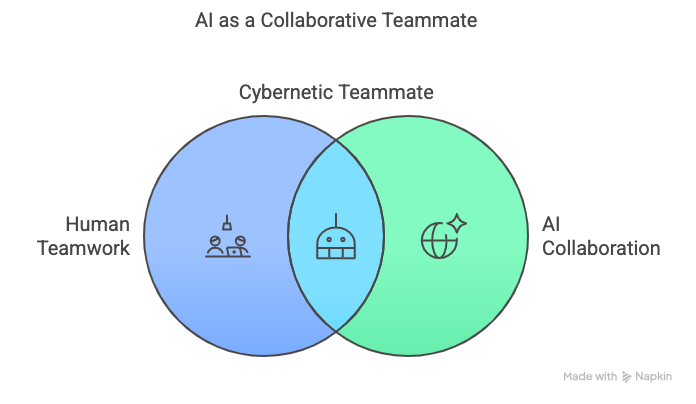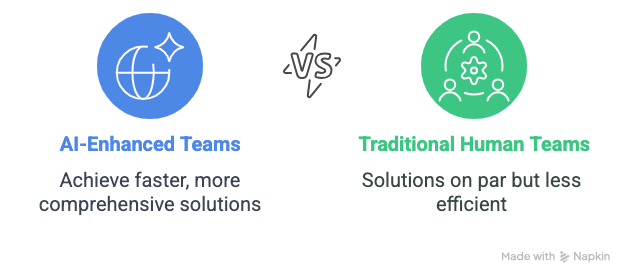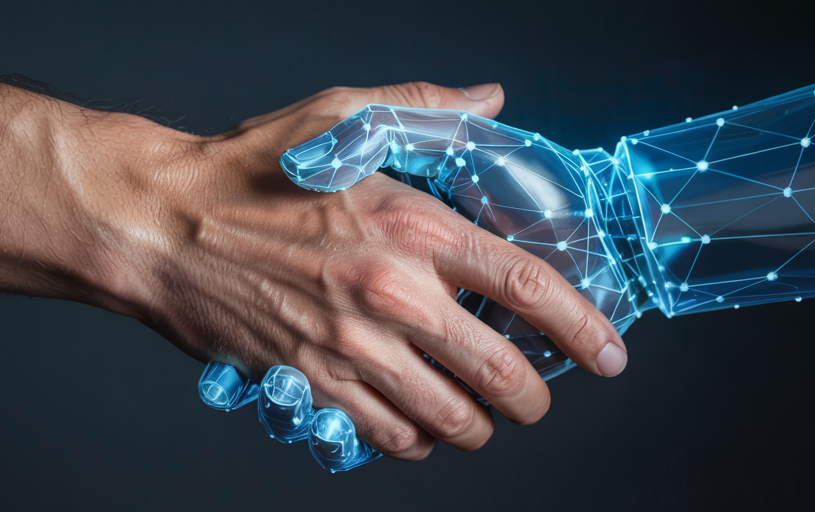Teamwork has long been a core practice in education. We encourage students to collaborate across disciplines, learn from diverse perspectives, and engage in shared problem-solving. But what if one of the most generative and reliable team members was not human?
A recent large-scale field experiment conducted at Procter & Gamble, led by researchers from Harvard Business School, Wharton, and ESSEC, examined whether generative AI—such as GPT-4—can operate not merely as a tool, but as a cybernetic teammate. The findings challenge long-held assumptions about collaboration, expertise, and the emotional dimensions of teamwork.

AI as an Extension of Thought
The study revealed that individuals working with AI produced solutions on par with two-person human teams working without AI. They worked faster, generated more comprehensive responses, and reported better emotional experiences.

Dissolving Disciplinary Silos
Typically, collaboration is used to bring together complementary expertise. Engineers and marketers, for example, collaborate to balance feasibility and market fit. In this experiment, AI-enabled individuals produced solutions that naturally blended both technical and commercial dimensions, regardless of their background.
Emotional Intelligence from Algorithms?
Another surprising outcome was emotional. Participants working with AI reported greater excitement, enthusiasm, and lower levels of frustration. This suggests AI can play a role in the emotional scaffolding of learning, not just the intellectual. This echoes emerging research showing that generative AI can offer encouraging, human-like dialogue that promotes emotional well-being.
Human + AI: A New Teaming Model
Although individuals with AI performed well, the most exceptional solutions came from teams of humans working alongside AI. This suggests a new paradigm. Human-AI teaming as a superadditive model of collaboration, where machines amplify, not substitute human creativity and decision-making. This concept is at the heart of augmented cognition, where human agency is preserved and expanded through thoughtful integration of intelligent systems.
Although individuals with AI performed well, the most exceptional solutions came from teams of humans working alongside AI.
What Educators Must Now Teach
To prepare students for a world of AI-augmented work and learning, we must teach not only collaboration among people but also collaboration with machines. That includes:
- Prompt fluency: knowing how to interact effectively with AI systems.
- Meta-cognitive control: deciding when and how to use AI strategically.
- Creative divergence: using AI to expand idea spaces, not just refine them.
- Ethical framing: understanding the social and moral implications of augmentation.
We are not preparing students for a world with AI. We are preparing them to think with AI. This requires educators to redesign not only the tools we use, but the very models of cognition, collaboration, and creativity that underpin our pedagogical strategies.
Source:
Dell'Acqua, Fabrizio and Ayoubi, Charles and Lifshitz-Assaf, Hila and Sadun, Raffaella and Mollick, Ethan R. and Mollick, Lilach and Han, Yi and Goldman, Jeff and Nair, Hari and Taub, Stew and Lakhani, Karim R., The Cybernetic Teammate: A Field Experiment on Generative AI Reshaping Teamwork and Expertise (March 28, 2025). Harvard Business School Strategy Unit Working Paper No. 25-043, Harvard Business School Technology & Operations Mgt. Unit Working Paper No. 25-043, Harvard Business Working Paper No. No. 25-043, Available at SSRN: https://ssrn.com/abstract=5188231 or http://dx.doi.org/10.2139/ssrn.5188231

